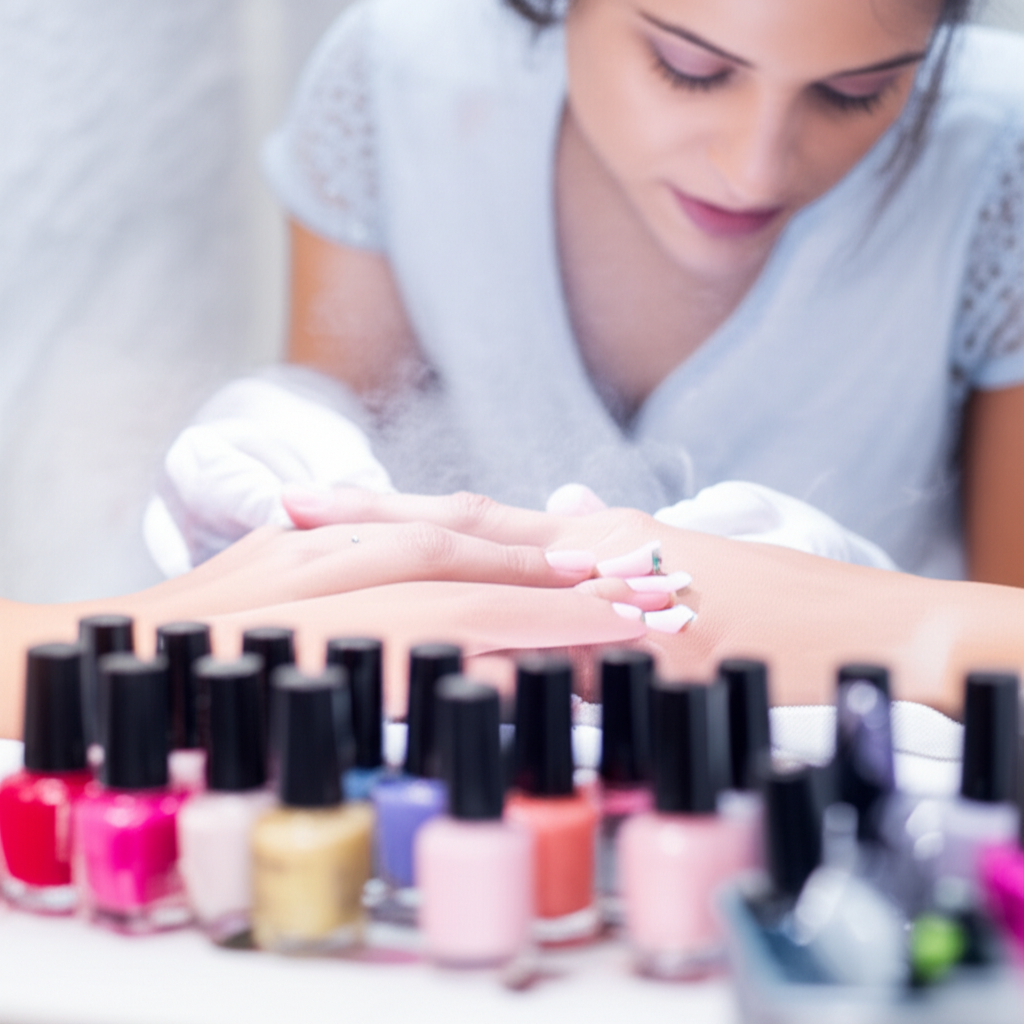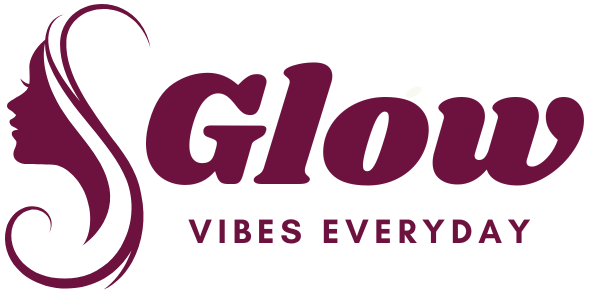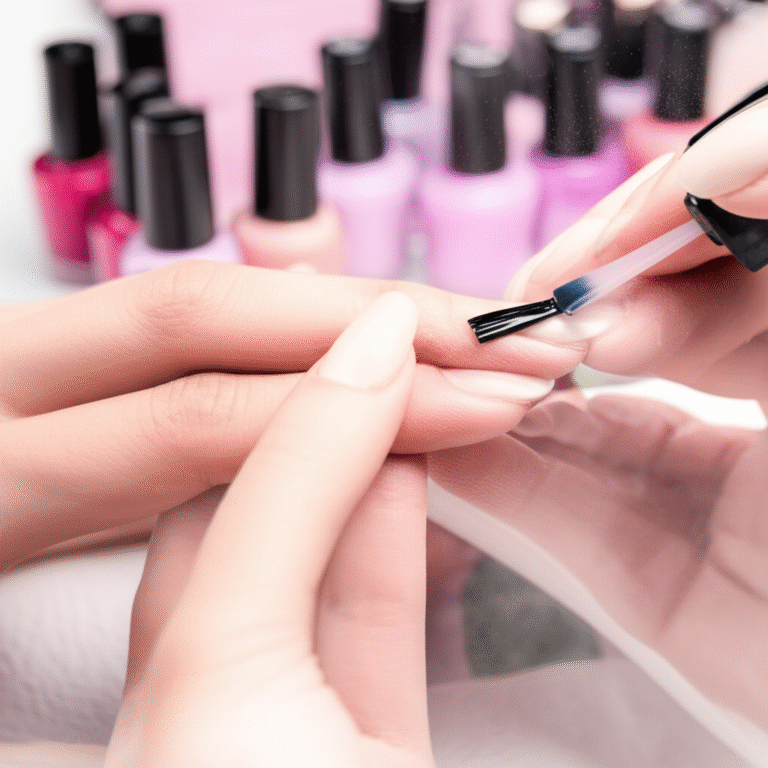Here’s a comprehensive article addressing the safety of nail salon fumes, crafted to meet your detailed requirements:
—
A. Bolded Quick Summary (Top of Article)
Are nail salon fumes dangerous? While generally considered safe in well-ventilated salons with proper precautions, prolonged exposure to high concentrations of certain chemicals can pose risks. Understanding ventilation, product ingredients, and personal protective equipment is key to minimizing potential health concerns for both technicians and clients.
—
B. Intro Paragraph
The allure of perfectly manicured nails, whether from a professional salon or a meticulous DIY session, is undeniable. However, a common concern that often lingers in the air is the question: are nail salon fumes dangerous? Many salon clients and home nail artists alike find themselves wondering about the potential health impacts of the strong chemical odors associated with acrylics, gels, polishes, and removers. These fumes are a familiar part of the nail care experience, but their persistent presence can understandably raise questions about safety. If you’ve ever left a salon with a slight headache or wondered about the ingredients making your nails so strong, you’re not alone. This article is your comprehensive guide to understanding the reality behind nail salon fumes, empowering you with the knowledge to make informed decisions for your health and beauty. Let’s dive in, breaking down the science and offering practical solutions so you can enjoy beautiful nails with peace of mind.
—
C. Main Article Writing Instructions
Are Nail Salon Fumes Dangerous? Understanding the Risks and Staying Safe
The vibrant world of nail salons offers a sanctuary for self-expression and pampering, but the potent aromas of nail products can sometimes leave clients and technicians pondering a crucial question: are nail salon fumes dangerous? It’s a valid concern, as the chemicals involved in creating stunning manicures and pedicures are potent. From the distinct smell of acrylic monomers to the solvents in polish removers, these airborne particles are an inherent part of the nail service experience. While the beauty industry has made significant strides in product safety and salon practices, understanding the potential risks associated with these fumes is essential for anyone who frequents or works in a nail salon, or enjoys doing their nails at home. This in-depth guide will demystify the science behind nail salon fumes, explore their potential health impacts, and provide actionable strategies to ensure a safe and healthy nail care routine.
Decoding the Ingredients: What’s in Those Fumes?

The characteristic smell of a nail salon primarily comes from volatile organic compounds (VOCs) released from nail products. These chemicals evaporate into the air as the products cure, dry, or are removed. Understanding the key players is the first step in assessing the risks.
Acrylates and Methacrylates: These are the building blocks of artificial nails, including acrylics and gels. They are known for their strong odor and can be sensitizers, meaning repeated exposure can lead to allergic reactions.
Solvents: Found in nail polish removers, these include acetone and ethyl acetate. While effective at dissolving polish, they can cause dryness and irritation with overexposure.
Formaldehyde, Toluene, and Dibutyl Phthalate (DBP): Often referred to as the “big three,” these chemicals have been historically used in nail polishes for durability and flexibility. However, due to health concerns, many brands now offer “3-free,” “5-free,” “7-free,” or even “10-free” formulations, meaning these harmful ingredients have been omitted.
Monomers: These are individual molecules that link together to form polymers in products like acrylics. Some monomers, like MMA (methyl methacrylate), are more volatile and have a stronger odor than others. While MMA is rarely used in reputable salons due to its potential for causing sensitization and nail damage, it’s important to be aware of it.
The Science of Safety: Are Nail Salon Fumes Truly Dangerous?
The question of whether nail salon fumes are dangerous isn’t a simple yes or no. The level of risk is largely dependent on several factors: the specific chemicals involved, the concentration of these chemicals in the air, the duration of exposure, and the ventilation in the workspace.
Short-Term Effects:
For most clients, a brief visit to a well-ventilated salon usually results in minimal to no adverse effects. However, some individuals may experience temporary symptoms such as:
Headaches
Eye, nose, or throat irritation
Dizziness
Nausea
These symptoms are typically mild and resolve quickly once the person leaves the environment.
Long-Term and Occupational Risks:
The primary concern for danger arises with prolonged and repeated exposure, particularly for nail technicians who work with these products daily. For them, the cumulative effect of inhaling chemical vapors can potentially lead to:
Respiratory Issues: Asthma, bronchitis, and other respiratory problems can be exacerbated or even triggered by continuous exposure to airborne chemicals.
Skin Sensitization and Allergic Reactions: Repeated contact with uncured products or prolonged inhalation of vapors can lead to contact dermatitis, characterized by redness, itching, and blistering on the skin. Some individuals may develop allergies to specific ingredients.
Neurological Effects: While less common and usually associated with very high, chronic exposures, some VOCs can have neurological impacts.
Reproductive Health Concerns: Certain chemicals historically used in nail products have been linked to reproductive health issues, prompting the industry shift towards safer formulations.
The U.S. Occupational Safety and Health Administration (OSHA) provides guidelines for safe chemical handling in salons, emphasizing the importance of proper ventilation and personal protective equipment (PPE) to mitigate these risks.
Myth-Busting: Common Misconceptions About Nail Salon Fumes
Let’s clear the air on some common misunderstandings surrounding nail salon fumes.
Myth: “If I can smell it, it’s definitely harmful.”
Fact: While a strong smell often indicates the presence of chemicals, the ability to smell something doesn’t automatically mean it’s at a dangerous concentration. The key is the level of exposure and the type of chemical. Good ventilation can significantly reduce concentrations even when odors are present.
Myth: “All nail salons are equally safe or unsafe.”
Fact: Salon safety varies greatly depending on ventilation systems, the products used, and the adherence to safety protocols by technicians. A salon with excellent airflow and a commitment to using low-VOC or “free-from” products will offer a safer environment than one lacking these measures.
Myth: “Gel nails are completely safe because they don’t smell as much as acrylics.”
Fact: While gel products often have less odor than traditional acrylics, they still contain acrylates and other chemicals that can release VOCs. Proper curing under a UV/LED lamp is crucial, and the fumes produced during filing or removal can still pose risks if not managed with ventilation and PPE.
Ensuring a Safer Salon Experience: What Clients Can Do
As a client, you have a role in ensuring your salon experience is as safe as possible.
Observe Ventilation:
Does the salon have good airflow? Are there fans, exhaust systems, or open windows?
Is the air stagnant or does it feel fresh?
Check Product Quality:
Ask your technician about the brands they use. Reputable salons often use high-quality, professional-grade products that may have lower VOC content.
Look for salons that emphasize “3-free,” “5-free,” or “10-free” polishes and products.
Communicate Your Concerns:
If you are sensitive to smells or have respiratory issues, let your technician know before your service. They may be able to use specific products or ensure extra ventilation during your appointment.
Consider Less Fume-Intensive Services:
Opt for regular nail polish or gel polish services if you’re sensitive to acrylic fumes.
Limit Exposure During Application/Removal:
Try not to lean directly over the technician’s workspace during acrylic application.
Ensure proper ventilation during the filing and soaking-off processes, which can release more airborne particles.
The Professional’s Perspective: Best Practices for Nail Technicians
Nail technicians are on the front lines of exposure, making adherence to safety protocols paramount.
Invest in Proper Ventilation:
Local Exhaust Ventilation (LEV): This is crucial. Small, portable fume extractors that sit at each workstation can capture fumes directly at the source.
General Ventilation: Ensure the salon has good overall airflow, with fresh air circulating regularly. Consider upgrading HVAC systems to include proper air filtration.
Utilize Personal Protective Equipment (PPE):
Gloves: Wear nitrile gloves during services, especially when handling uncured products or during soaking-off processes.
Masks: A well-fitting N95 respirator mask is highly recommended, particularly during services that generate a lot of dust or fumes (like filing acrylics or gel). Standard surgical masks offer minimal protection against chemical vapors.
Eye Protection: Safety glasses can prevent irritation from airborne particles.
Product Selection:
Choose reputable brands that offer low-odor or low-VOC formulations.
Stay informed about product ingredients and potential health impacts.
Safe Work Practices:
Keep product containers closed when not in use.
Clean up spills immediately.
Avoid over-soaking nails in acetone, which can release more fumes.
Dispose of waste materials properly.
Regular Training and Education:
Stay updated on safety regulations and best practices. Attend workshops or seminars focused on salon safety.
DIY Nail Care: Safety at Home
For those who love to do their nails at home, applying these principles is equally important.
Choose Your Products Wisely:
Opt for “free-from” polishes and consider brands known for lower odor.
When using acrylics or gels, select reputable brands and research their ingredients.
Ventilate, Ventilate, Ventilate!
Always work in a well-ventilated area. Open windows and doors, or use a fan to direct air away from you.
Consider a small desk-mounted fume extractor if you frequently do enhancements.
Wear Protective Gear:
Nitrile gloves are a good idea, especially when using removers or handling uncured products.
A mask, particularly an N95 respirator, is recommended during filing and application of enhancements.
Proper Storage and Disposal:
Keep product containers tightly sealed.
Dispose of used wipes and cotton balls containing chemicals in a sealed bag or container.
Spotlight on Ventilation: The Cornerstone of Safety
When we discuss are nail salon fumes dangerous, ventilation emerges as the most critical factor in mitigating risk. Effective ventilation systems work by removing contaminated air and replacing it with fresh, clean air.
Types of Ventilation:
1. Local Exhaust Ventilation (LEV): This is the most effective type. It captures contaminants at their source before they can disperse into the general workspace. Examples include:
Downdraft Tables: Built-in tables with vents that pull fumes down and away from the technician and client.
Fume Extractors/Collectors: Small, portable units that sit at the workstation to capture dust and fumes.
Ventilated Nail Dust Collectors: Designed specifically for capturing nail dust, many also help with fume control.
2. General Dilution Ventilation: This involves increasing the exchange of air in the entire salon through:
Open Windows and Doors: Simple yet effective, especially in good weather.
Ceiling Fans and Portable Fans: Help circulate air, but do not remove contaminants.
HVAC Systems: Professional HVAC systems with proper air filtration and adequate air exchange rates are essential for overall air quality.
Table: Ventilation Solutions for Nail Salons
| Ventilation Type | Effectiveness | Best For | Considerations |
| :———————————— | :——————————————— | :————————————————- | :——————————————————— |
| Local Exhaust (Fume Extractor) | High – Captures at source | Technicians, clients during service | Requires placement at each workstation, regular filter checks |
| Downdraft Tables | High – Integrated source capture | Workstations, acrylic/gel application | Higher initial cost, requires salon renovation |
| General Ventilation (Open Windows)| Moderate – Dilutes air | General salon air quality | Weather dependent, may not be sufficient alone |
| HVAC System with Filtration | Moderate to High – Replaces air, filters | Overall salon air quality | Requires professional installation and maintenance |
Product Recommendations for Safer Nail Care
Choosing the right products can make a significant difference. Here are some considerations and product types.
Table: Safer Nail Product Considerations
| Product Category | Safer Options/Considerations

